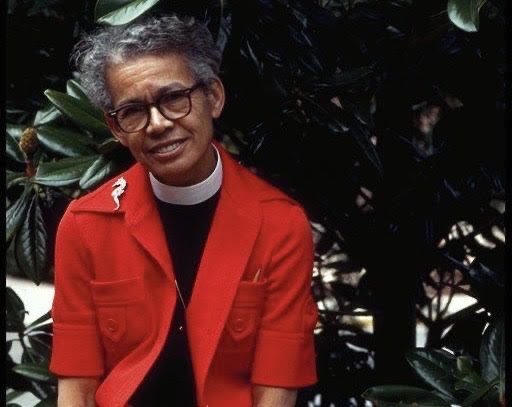Now, this is a site worth visiting!
Dr. Pauli Murray was an attorney, activist, and pioneer in the LGBTQ+ community. An extraordinary scholar, much of Murray’s work would later influence racial, gender equality studies and the civil rights movement. Now, after more than a decade of renovations, the Pauli Murray Center for History and Social Justice has opened to honor the activist’s inspiring life work, ABC 11 news reports.
“Pauli Murray was an architect, Pauli Murray left us breadcrumbs and blueprints, and so people will go into this space to learn about Pauli Murray, but also hopefully to gain tools about how to move contemporary social justice work forward. When I’m feeling tense, when I’m feeling like I’m running out of time to make an impact on the world, Pauli Murray whispers to me there is still time yet,” said Center Executive Director Angela Thorpe Mason.
The Center opened to the public earlier this month, located at Murray’s childhood home in Durham, North Carolina. Many flocked to the opening, citing Murray’s extraordinary impact on history.
“Pauli was a role model in what it means to be true to yourself and stand up for a world of liberation. Being inside of the home and getting to hear Pauli Murray’s voice, getting to see photos that they took throughout their life, it’s all really awesome,” said attendee Sarah Scriven, who used to work near Murray’s childhood home.
The opening comes almost four decades after Murray’s passing at the age of 75. During their lifetime, Murray was an advocate for gender equality, although gender expressions were vastly different. Posthumously, family members have used varying pronouns to describe the revolutionary. In step with the family, The Center also keeps the use of Dr. Murray’s pronouns fluid, explaining the decision via the website.
“This is an ongoing discussion among the Pauli Murray Center. Currently, the Pauli Murray Center chooses to use he/him and they/them pronouns when discussing Pauli Murray’s early life and she/her/hers when discussing Dr. Murray’s later years. When discussing Pauli Murray in general, we interchangeably use she/her/hers, he/him/his, and they/them/theirs pronouns, or we refer to Pauli Murray by their name and title(s). We hope this strategy will encourage readers to embrace the individual and fluid nature of gender,” the Center states.
The goal is to bring awareness to who Dr. Murray was and continue the expansiveness of their work by uncovering facets of Murray’s life. Thorpe Mason says the opening of Murray’s new Center is only the beginning.
“There are still people far and wide, even people in our community who’ve never heard Pauli’s name or who do not know about Pauli’s impact.”
To learn more about the Pauli Murray Center for History and Social Justice, click HERE.
Cover photo: Dr. Pauli Murray’s Childhood Home Opens as Center to Honor Activist’s Inspiring Work/Photo credit: Schlesinger Library/Radcliffe Institute/Harvard University

